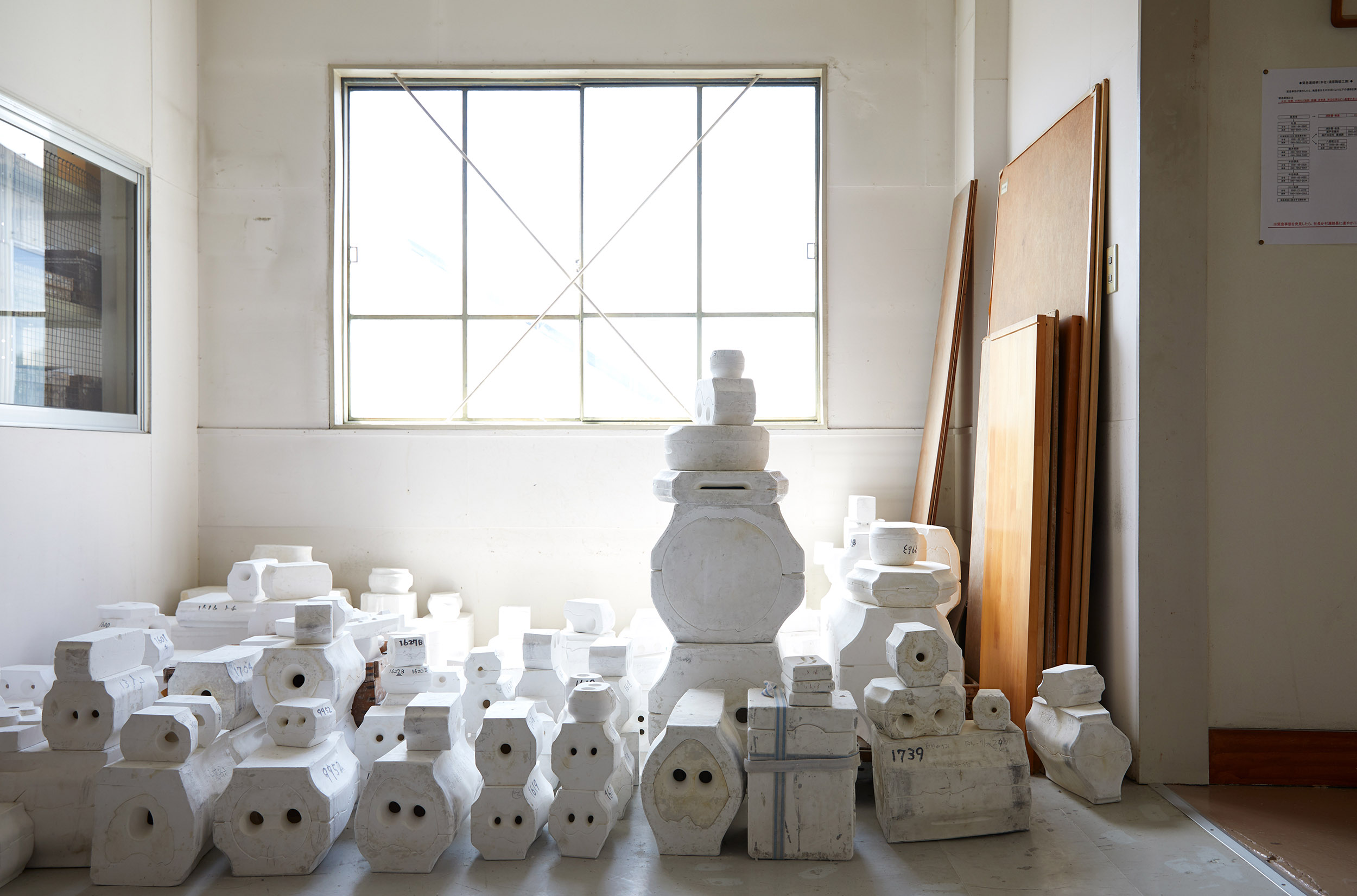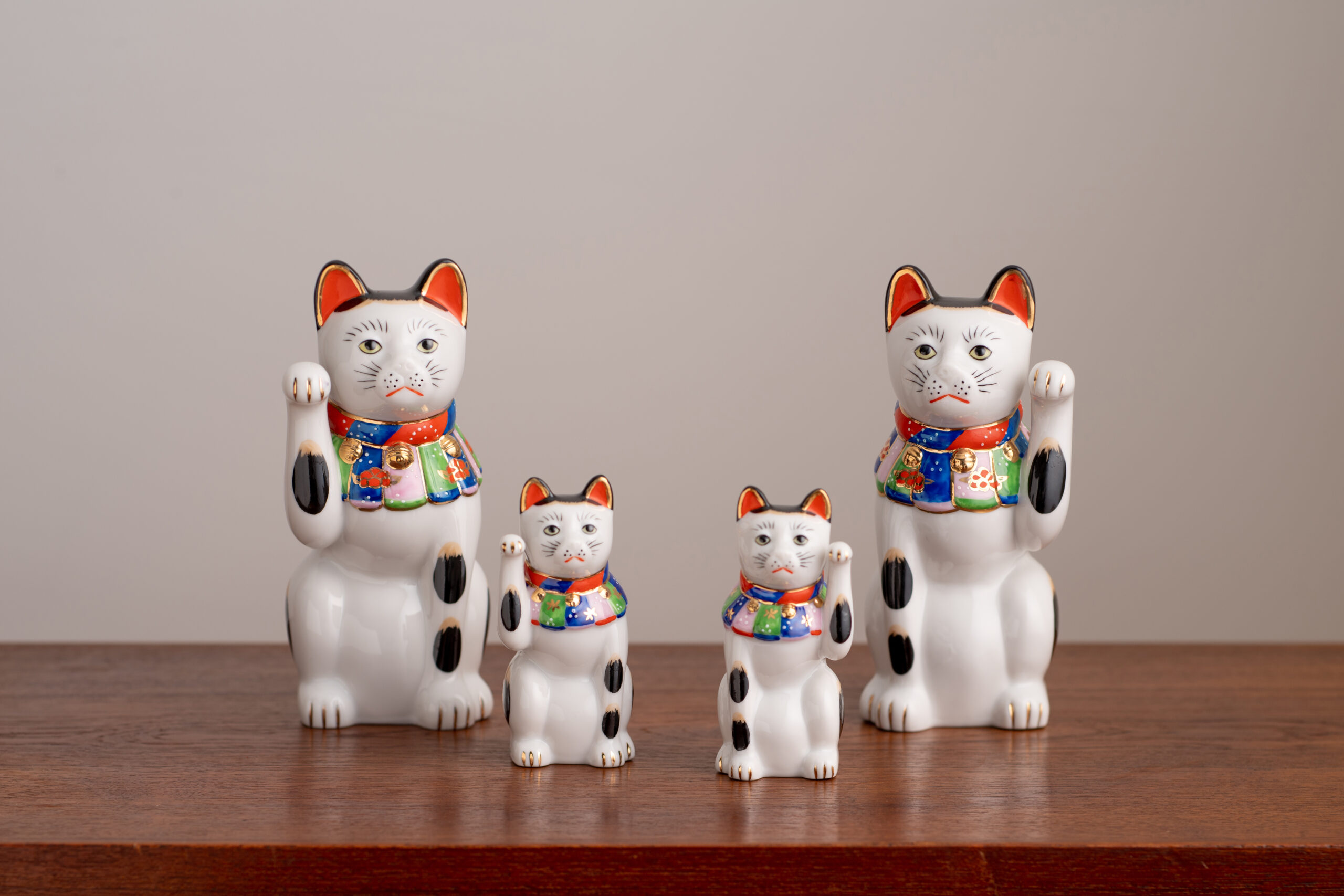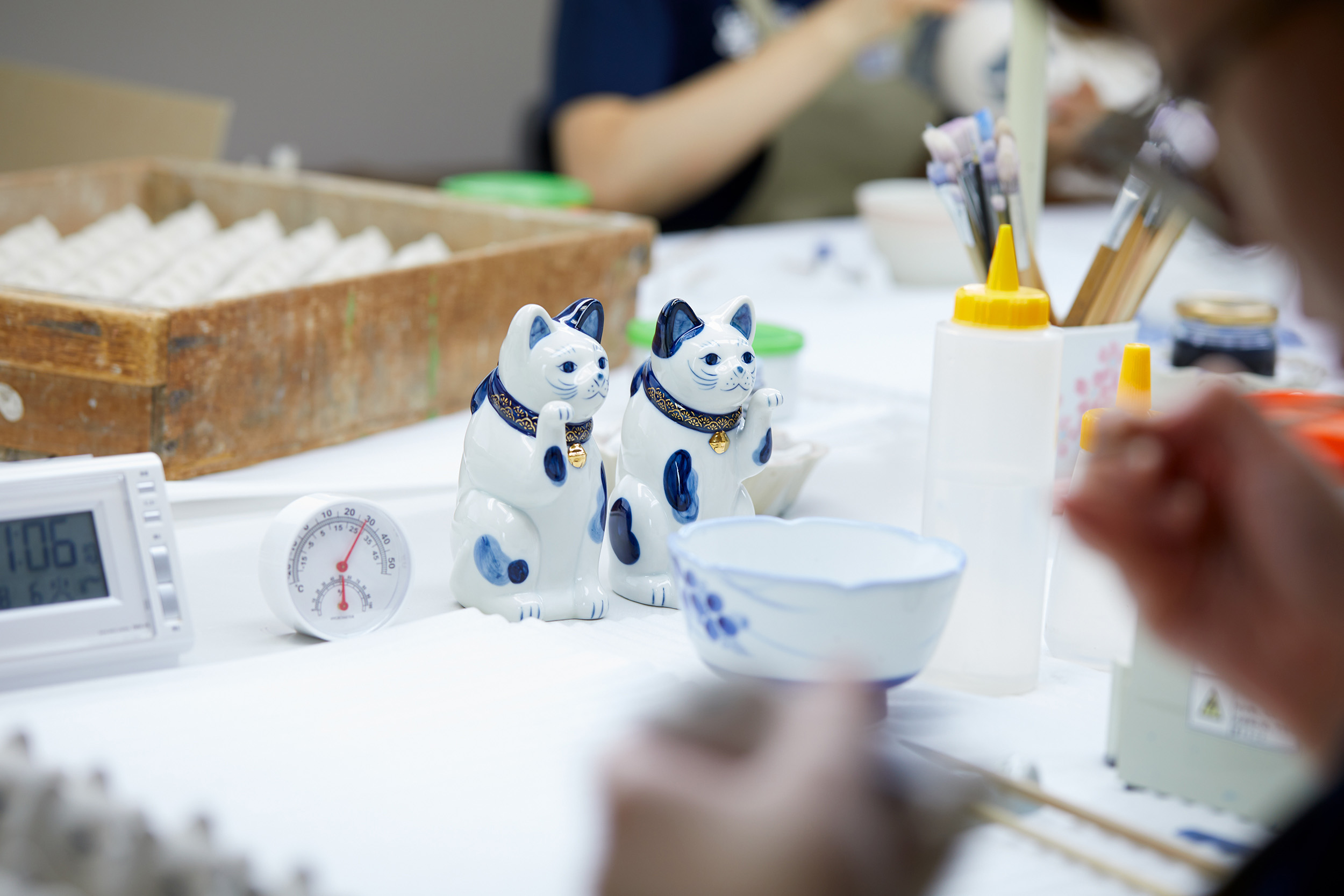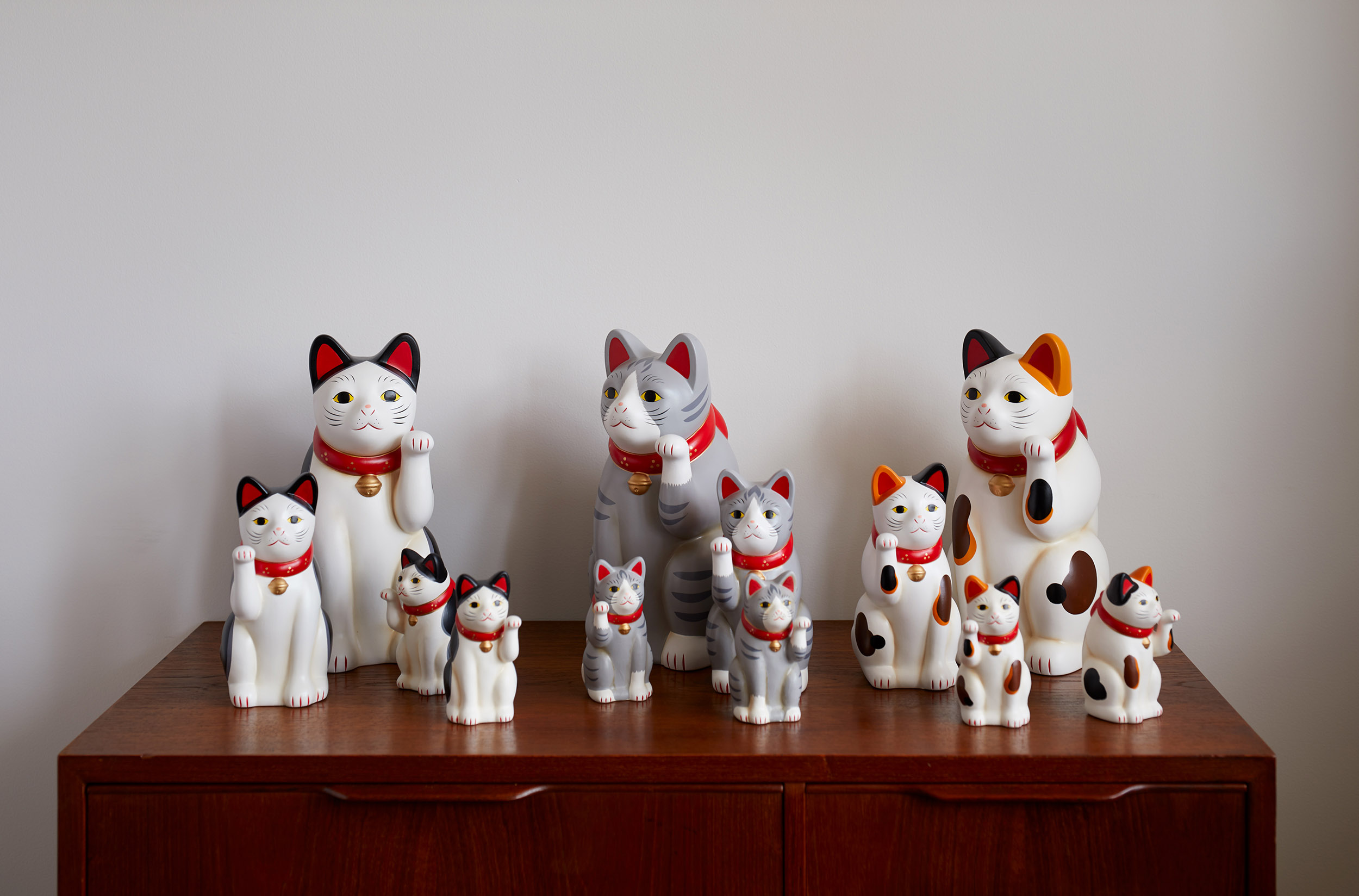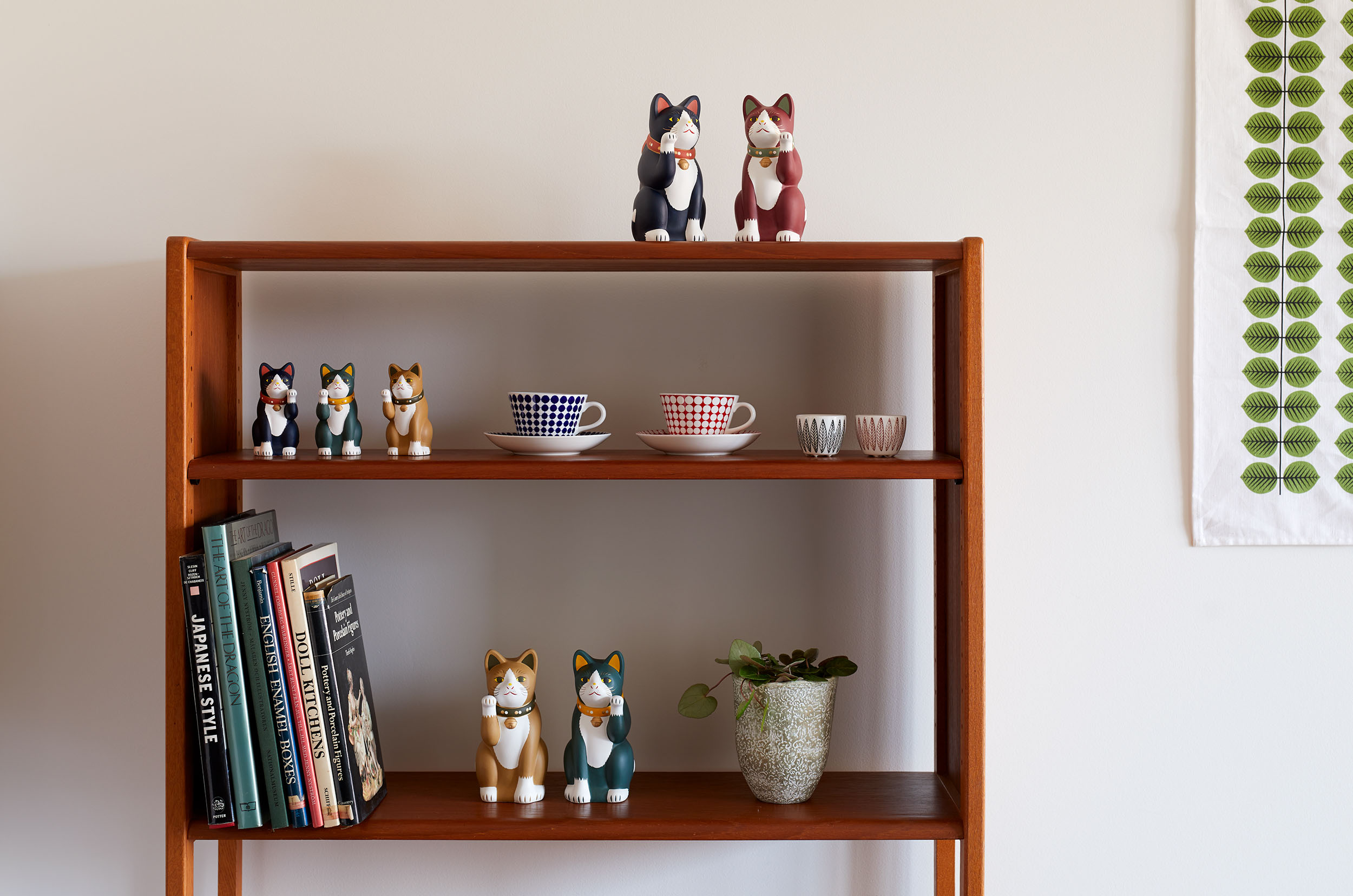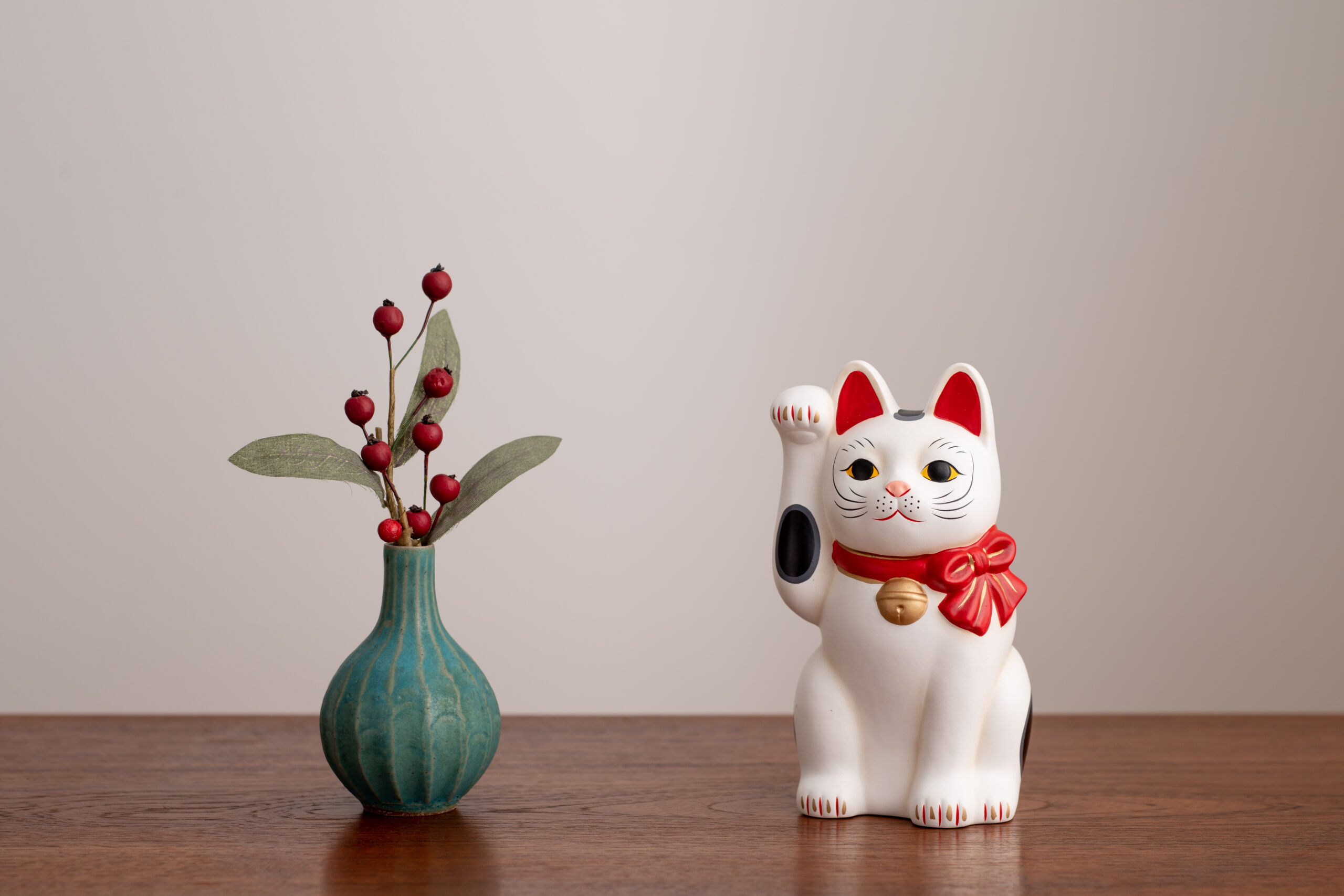瀬戸焼の歴史
瀬戸焼の始まりはおよそ1000年前。
各地の窯が無釉陶器を生産するなか、「古瀬戸」と呼ばれる釉薬を全体に施した陶器をいち早く生産したのが瀬戸窯です。江戸時代には染付磁器の生産が急速に広がり、一大産地へと成長。その磁器は各国の万国博覧会への出品を機に海外でも高く評価され、世界に瀬戸の名が広がりました。今や日本六古窯の一つに数えられる瀬戸は、日本の焼きもの文化の発展を担ってきた国内屈指の陶磁器産地です。
The history of Seto-yaki
The history of Seto-yaki ceramics dates back over 1,000 years. Though kilns in other regions produced unglazed pottery, the Seto kiln became the first to produce pottery with a full glaze, known as ‘Furu-Seto ware’. Blue-and-white glazed porcelain production quickly spread during the Edo Era, with Seto becoming the largest porcelain producer in Japan. Seto porcelain received widespread recognition thanks to displays at international expositions, and Seto’s name became synonymous with ceramics worldwide. Today, as one of Japan’s renowned six ancient kilns, Seto remains the preeminent center of porcelain production, having played a key role in the development of Japanese pottery culture.
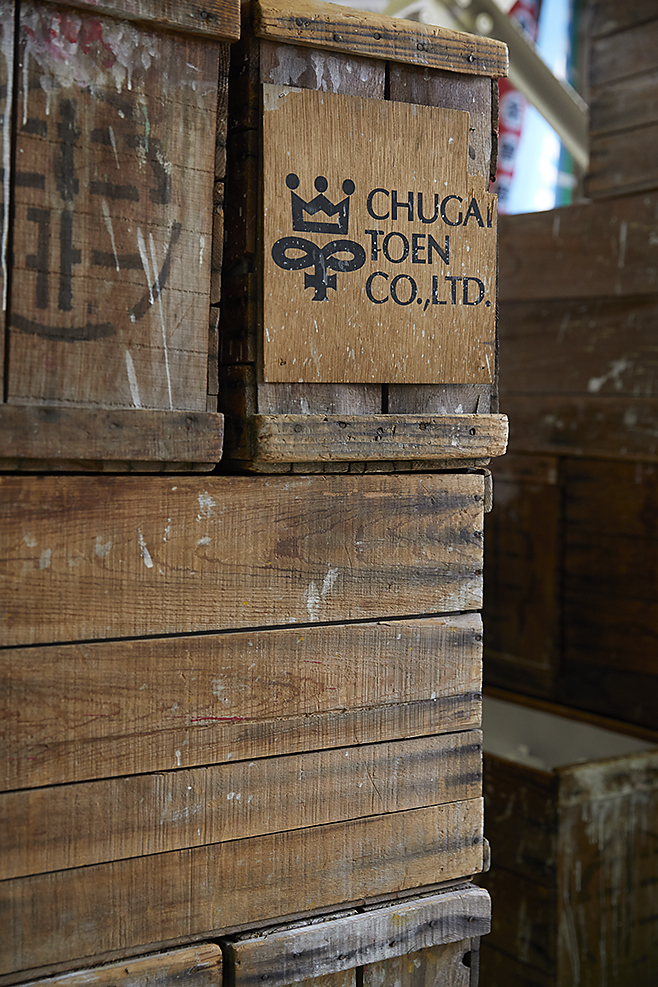
瀬戸焼きとまねき猫の関係
ヨーロッパから導入された石膏型の技法を応用して、明治30年代後半にまるで本物の猫のようにすらりとした猫背が特徴の「古瀬戸(ふるせと)型招き猫」は誕生しました。その技法と往時のスタイルを受け継いだのが「瀬戸まねき猫」です。一般的に右手は「お金」、左手は「多くの人」を呼び込むといわれている招き猫ですが、多彩な色彩を加えた「瀬戸まねき猫」は、さらに多くのご利益をもたらすことでしょう。
Setoyaki and maneki-neko
Toward the end of the Meiji Era in the late 1800s, European plaster mold techniques arrived in Seto, giving rise to ‘Seto Novelty’ (ornamental figurines)
produced exclusively for export. The first of Seto’s ceramic maneki-neko (beckoning cat) figurines were produced using plaster molds toward the end of the 1800s.Maneki-neko figurines produced in Seto have a uniquely realistic and elegant appearance.A raised right paw signifies money, while a left paw entices customers to a business.
Seto’s beckoning cats have gained popularity for their variety of styles and rich blessings.
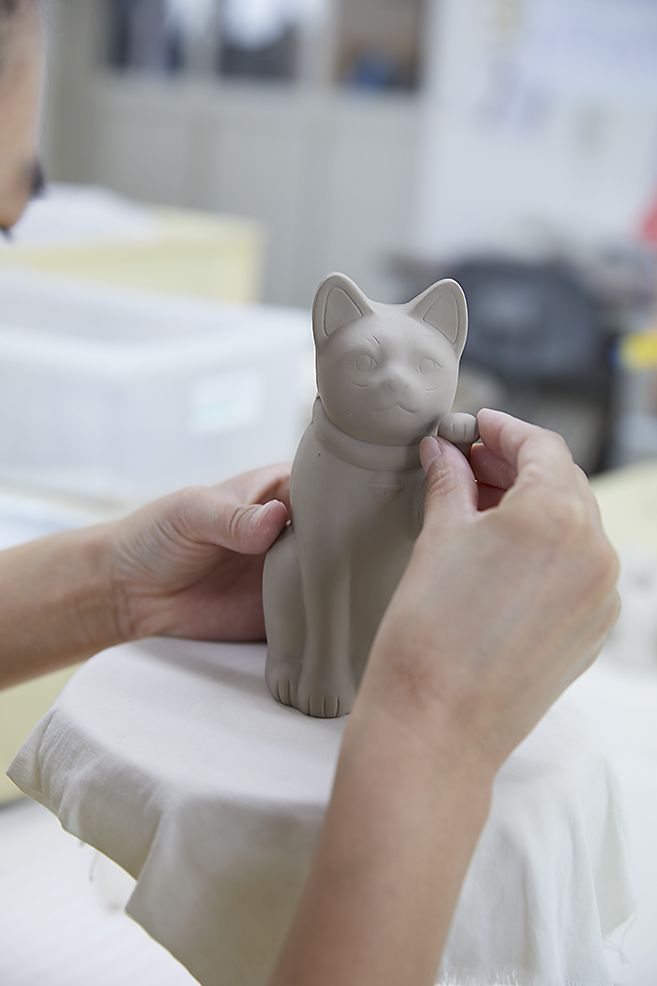
STOCKIST
おもだか屋(OMODAKAYA)
489-0821 愛知県瀬戸市薬師町3番地
TEL 0561-87-1700
http://omodakaya.jpビームス ジャパン(BEAMS JAPAN)
160-0022 東京都新宿区新宿3-32-6
03-5368-7300
http://www.beams.co.jp/beams_japanおもだか屋オンラインストア
(ECサイト)
https://omodakaya.com

